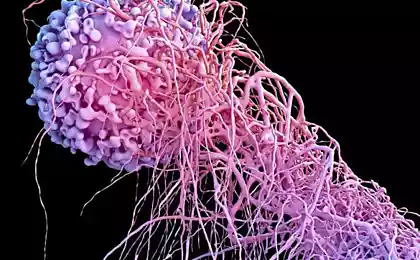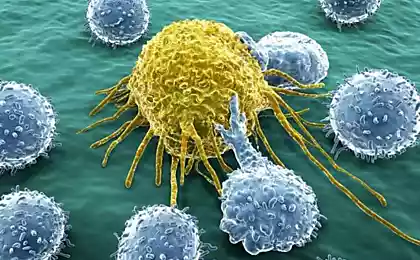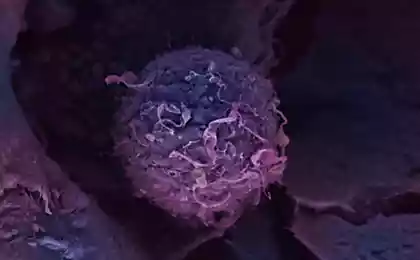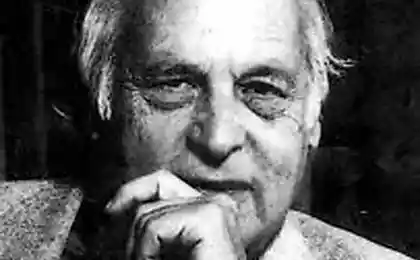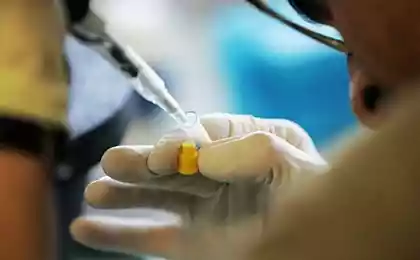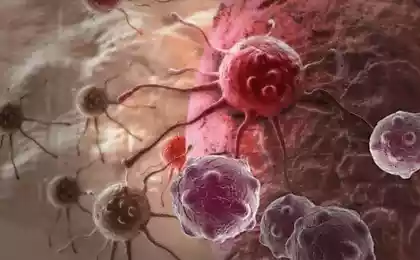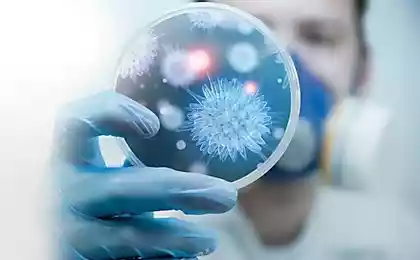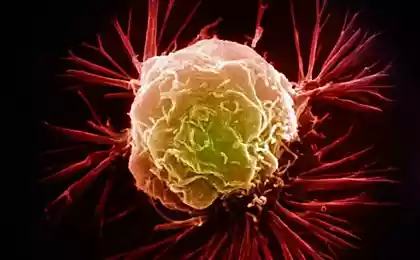312
Sugar – fuel for the growth of cancer cells
It puzzled us why the simple concept of sugar feeds cancer is not accepted by mainstream medicine as part of a comprehensive cancer treatment plan.
To date, more than 4 million people are being treated, and hardly any of them comply with some of the nutritional guidelines, other than those that say you should “just eat good foods.” Most of the patients we talk to have never heard of any nutritional recommendations.
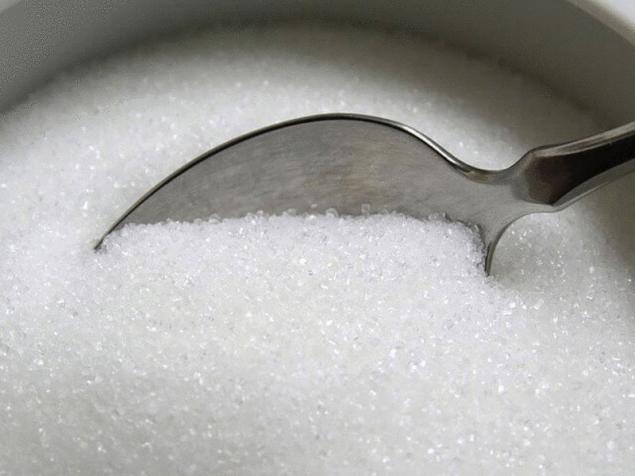
We think that many cancer patients would do themselves a great service if they began to control the supply of a nutrient, glucose, which is a necessary fuel for cancer cell growth.
Blood glucose can be managed through proper diet, supplementation, exercise, meditation, and prescription medications when needed. These actions may be among the most important components for a cancer treatment, prevention, and recovery program.
In 1931, Nobel laureate in medicine, Hermann Otto Warburg, PhD, first discovered that cancer cells have a fundamentally different energy metabolism compared to healthy cells.
The essence of his dissertation is that malignant tumors often show an increase in anaerobic glycolysis – the process by which glucose is used as fuel for cancer cells and release lactic acid as a byproduct. Large amounts of lactic acid from cancer cells are then transported to the liver. This conversion of glucose to lactate generates a more acidic pH in cancerous tissues, resulting in general physical fatigue from lactic acid accumulation. Thus, large tumors tend to show a more acidic pH.Extracting only about 5% of the available energy in food, the cancer "wastes" energy, and the patient becomes tired and feels constant malnutrition. This vicious cycle increases the fatigue of the body. This is one of the reasons why 40% of cancer patients die from malnutrition or cachexia. Thus, cancer treatments should cover the regulation of blood glucose levels through diets, supplements, and exercise. A patient’s professional approach and self-discipline are crucial in the fight against cancer. It is necessary to eliminate sugar and “sweet” carbohydrates from the diet in order to control glucose levels within a narrow range – for cancer to experience “hunger” and the immune system to strengthen.
The glycemic index is an indicator of how much a given food affects blood glucose levels. The lower it is, the slower the process of digestion and absorption of food, which ensures a healthier and gradual absorption of sugar into the blood.
On the other hand, a high index means that blood glucose levels increase rapidly, which stimulates the pancreas to produce insulin and this leads to a drop in blood sugar levels. These spikes in blood sugar levels are harmful to health and, when combined with stress, they break down the body.
Sugar is a general term used to define simple carbohydrates, which include monosaccharides such as fructose, glucose, and galactose; and disaccharides such as maltose and sucrose (white table sugar). Imagine them as a brick wall.
When fructose is the main brick-monosaccharide in the wall, the glycemic index has a healthy effect on the body, as this simple sugar is slowly absorbed in the gut and then converted to glucose in the liver. As a result, in the body there is a gradual rise and fall in blood glucose levels.
If glucose is the main brick-monosaccharide in the wall, the glycemic index will be elevated, which has an adverse effect on the body. This wall is destroyed during digestion and glucose begins to be pumped through the intestinal walls directly into the bloodstream, rapidly increasing blood glucose levels.
In other words, there is a “window of effectiveness” for glucose: too low leads to a feeling of lethargy and creates clinical hypoglycemia; too high leads to a ripple effect of diabetic problems.
In 1997, the Diabetes Association established blood glucose standards:
Obviously, modern diets high in sugar lead to harmful effects on health. Excess glucose in the blood can initiate excessively rapid growth of yeast, deterioration of blood vessels, heart disease and other diseases.
Understanding and using the glycemic index is an important aspect of diet modification for cancer patients. However, there is evidence that sugar feeds cancer much better than starches (consisting of long chains of simple sugars). A study in rats showed that feeding individuals with equivalent calories of sugar and starch led to the fact that the animals on sugar showed more cases of breast cancer.
The glycemic index is a useful tool for cancer patients and healthy food control, but it is not 100%. Using one glycemic index, it would be considered that 1 cup of white sugar is preferable to baked potatoes.
This is because the glycemic index of sugary foods may be lower than that of starchy foods. To be safe, for cancer patients, we recommend eating less fruit, more vegetables and virtually eliminating refined sugars from the diet.
What we found in the literature In studies in mice, it was found that cancerous tumors are sensitive to blood glucose levels. 68 subjects were injected with an aggressive strain of breast cancer, then put on a diet to arouse either high blood sugar (hyperglycemia), normoglycemia, or low blood sugar (hypoglycemia).
The conclusion was as follows:
“The lower the blood glucose level, the greater the survival rate.” After 70 days of experimentation, 8 of the 24 hyperglycemic mice survived compared to 16 of the 24 normoglycemic mice and 19 of the 20 hypoglycemic mice.
This suggests that regulating sugar intake is key to slowing breast tumor growth. Our study, which took 10 healthy people, assessed blood glucose levels and the phagocytic neutrophil index, which measures the ability of immune cells to capture and destroy invaders such as cancer. Eating 100 g of carbohydrates from glucose, sucrose, honey and orange juice significantly reduces the ability of neutrophils to absorb bacteria. Starch doesn't have that effect.
A four-year study at the National Institute of Health and Environment in the Netherlands examined 111 biliary cancer patients and their diet consisting of 480 foods. It was found that when consuming sugar, the cancer tumor grows 2 times faster than when using other products.
In addition, epidemiological studies in 21 modern countries that monitor morbidity and mortality (Europe, North America, Japan, etc.) have shown that sugar consumption is a strong risk factor and contributes to a higher incidence of breast cancer, especially in older women.
Limiting sugar consumption should not be the only line of defense. In fact, a plant extract from avocado (American Perseus) shows interesting results for fighting cancer.
“The purified avocado extract contains mannoheptulose – a component that has been used in a number of tests on in vitro tumor cells,” say researchers at the Department of Biochemistry at the University of Oxford in the UK. They found that it inhibits glucose uptake by tumor cells from 25% to 75%, which prevents the production of the glucokinase enzyme – which is responsible for glycolysis. Mannoheptulose also inhibits the growth rate of cultured tumor cell lines. The same researchers gave laboratory animals a dose of mannoheptulose of 1.7 mg/g body weight for five days. It was able to reduce tumors from 65% to 79%. Based on these studies, it can be concluded that avocado extract can help cancer patients by limiting glucose levels in tumor cells.
Because cancer cells get most of their energy from anaerobic glycolysis, Joseph Gold, M.D., director of the Cancer Research Institute and a former U.S. Air Force physician, has suggested that a chemical called hydrazine sulfate, which is used in rocket fuel, may inhibit excessive gluconeogenesis (the production of sugars from amino acids) that occurs in depleted cancer patients.
Gold’s work demonstrated the ability of hydrazine sulfate to slow and reverse cachexia in advanced cancer patients. He conducted a placebo-controlled study with 101 cancer patients who took either 6 mg of hydrazine sulfate three times a day or a placebo. After a month, 83% of patients on hydrazine sulfate gained weight, compared to 53% in the placebo group. A similar study was conducted by the same lead researchers with 65 patients at the National Cancer Institute in Bethesda. Those who consumed hydrazine sulfate and exercise lived an average of 17 weeks longer.
Many doctors today do not have sufficient knowledge about the relationship between sugar and its role in tumor development. Tomography or PET is used to detect cancer. PET (Positron Emission Tomography) uses radioactively labeled glucose to detect tumor cells. PET is used to track the outcome of treatment of cancer patients and evaluate the effectiveness of treatment.
In Europe, the concept of sugar feeds cancer is very well known that oncologists or cancer doctors use Systemic Cancer Multi-Stage Therapy (SCMT) [http://med.ardenne.de/?therapien=systemic-cancer-mutlistep-therapy-scmt,=en]. Its founder is Manfred von Ardenne (Germany, 1965).
SCMT acts on injections of glucose to patients to increase its concentration in the blood. This reduces the pH level in cancerous tissues through the formation of lactic acid. In turn, this increases the heat sensitivity of malignant tumors, and also causes rapid growth of cancer, which allows you to emphasize all cancer cells, after which chemotherapy or radiation is performed.
The SCMT was tested in a Phase I cancer clinical trial (Institute for Applied Medical Research in Dresden, Germany). The study included 103 patients with cancer metastases or recurrent primary tumors. The five-year survival rate with SCMT treatment for cancer patients increased from 25% to 50%, and the full course of tumor regression increased from 30% to 50%.
This report shows that when stimulating the growth of cancer cells and treating it with toxic therapy, it leads to a dramatic increase in results.
A 50-year-old patient came to us with lung cancer after receiving a death sentence from her oncologist. She was keenly interested in approaches to treating cancer and understood the link between nutrition and cancer. She drastically changed her diet and almost completely eliminated sugar from her diet. A month later, she discovered that bread and oatmeal now tasted very sweet, even without the added sugar. Together with appropriate medical therapy, a positive attitude and an optimal nutrition program, she has overcome her last stage of lung cancer. We saw her last month, five years after treatment, and she still has no signs of the disease. He looks and feels great... Despite the fact that her oncologist said that there was no hope and sent her home to “live out” the last days. Almost all of us are addicted to sugar. There is no single food that can be more damaging to health. The problem is that most of us are addicted to it. Many books cite carbohydrate "addicts" that depend on sugar. We believe that 1 hour of enjoyment is not worth the serious problems that will arise in the near future. published
P.S. And remember, just changing our consumption – together we change the world!
Source: articles.shkola-zdorovia.ru/saxar-pitaet-rak/
To date, more than 4 million people are being treated, and hardly any of them comply with some of the nutritional guidelines, other than those that say you should “just eat good foods.” Most of the patients we talk to have never heard of any nutritional recommendations.

We think that many cancer patients would do themselves a great service if they began to control the supply of a nutrient, glucose, which is a necessary fuel for cancer cell growth.
Blood glucose can be managed through proper diet, supplementation, exercise, meditation, and prescription medications when needed. These actions may be among the most important components for a cancer treatment, prevention, and recovery program.
In 1931, Nobel laureate in medicine, Hermann Otto Warburg, PhD, first discovered that cancer cells have a fundamentally different energy metabolism compared to healthy cells.
The essence of his dissertation is that malignant tumors often show an increase in anaerobic glycolysis – the process by which glucose is used as fuel for cancer cells and release lactic acid as a byproduct. Large amounts of lactic acid from cancer cells are then transported to the liver. This conversion of glucose to lactate generates a more acidic pH in cancerous tissues, resulting in general physical fatigue from lactic acid accumulation. Thus, large tumors tend to show a more acidic pH.Extracting only about 5% of the available energy in food, the cancer "wastes" energy, and the patient becomes tired and feels constant malnutrition. This vicious cycle increases the fatigue of the body. This is one of the reasons why 40% of cancer patients die from malnutrition or cachexia. Thus, cancer treatments should cover the regulation of blood glucose levels through diets, supplements, and exercise. A patient’s professional approach and self-discipline are crucial in the fight against cancer. It is necessary to eliminate sugar and “sweet” carbohydrates from the diet in order to control glucose levels within a narrow range – for cancer to experience “hunger” and the immune system to strengthen.
The glycemic index is an indicator of how much a given food affects blood glucose levels. The lower it is, the slower the process of digestion and absorption of food, which ensures a healthier and gradual absorption of sugar into the blood.
On the other hand, a high index means that blood glucose levels increase rapidly, which stimulates the pancreas to produce insulin and this leads to a drop in blood sugar levels. These spikes in blood sugar levels are harmful to health and, when combined with stress, they break down the body.
Sugar is a general term used to define simple carbohydrates, which include monosaccharides such as fructose, glucose, and galactose; and disaccharides such as maltose and sucrose (white table sugar). Imagine them as a brick wall.
When fructose is the main brick-monosaccharide in the wall, the glycemic index has a healthy effect on the body, as this simple sugar is slowly absorbed in the gut and then converted to glucose in the liver. As a result, in the body there is a gradual rise and fall in blood glucose levels.
If glucose is the main brick-monosaccharide in the wall, the glycemic index will be elevated, which has an adverse effect on the body. This wall is destroyed during digestion and glucose begins to be pumped through the intestinal walls directly into the bloodstream, rapidly increasing blood glucose levels.
In other words, there is a “window of effectiveness” for glucose: too low leads to a feeling of lethargy and creates clinical hypoglycemia; too high leads to a ripple effect of diabetic problems.
In 1997, the Diabetes Association established blood glucose standards:
- 126 mg / dl - diabetic level;
- 111 - 125 mg / dl - impaired glucose tolerance;
- less than 110 mg/dL is considered normal.
Obviously, modern diets high in sugar lead to harmful effects on health. Excess glucose in the blood can initiate excessively rapid growth of yeast, deterioration of blood vessels, heart disease and other diseases.
Understanding and using the glycemic index is an important aspect of diet modification for cancer patients. However, there is evidence that sugar feeds cancer much better than starches (consisting of long chains of simple sugars). A study in rats showed that feeding individuals with equivalent calories of sugar and starch led to the fact that the animals on sugar showed more cases of breast cancer.
The glycemic index is a useful tool for cancer patients and healthy food control, but it is not 100%. Using one glycemic index, it would be considered that 1 cup of white sugar is preferable to baked potatoes.
This is because the glycemic index of sugary foods may be lower than that of starchy foods. To be safe, for cancer patients, we recommend eating less fruit, more vegetables and virtually eliminating refined sugars from the diet.
What we found in the literature In studies in mice, it was found that cancerous tumors are sensitive to blood glucose levels. 68 subjects were injected with an aggressive strain of breast cancer, then put on a diet to arouse either high blood sugar (hyperglycemia), normoglycemia, or low blood sugar (hypoglycemia).
The conclusion was as follows:
“The lower the blood glucose level, the greater the survival rate.” After 70 days of experimentation, 8 of the 24 hyperglycemic mice survived compared to 16 of the 24 normoglycemic mice and 19 of the 20 hypoglycemic mice.
This suggests that regulating sugar intake is key to slowing breast tumor growth. Our study, which took 10 healthy people, assessed blood glucose levels and the phagocytic neutrophil index, which measures the ability of immune cells to capture and destroy invaders such as cancer. Eating 100 g of carbohydrates from glucose, sucrose, honey and orange juice significantly reduces the ability of neutrophils to absorb bacteria. Starch doesn't have that effect.
A four-year study at the National Institute of Health and Environment in the Netherlands examined 111 biliary cancer patients and their diet consisting of 480 foods. It was found that when consuming sugar, the cancer tumor grows 2 times faster than when using other products.
In addition, epidemiological studies in 21 modern countries that monitor morbidity and mortality (Europe, North America, Japan, etc.) have shown that sugar consumption is a strong risk factor and contributes to a higher incidence of breast cancer, especially in older women.
Limiting sugar consumption should not be the only line of defense. In fact, a plant extract from avocado (American Perseus) shows interesting results for fighting cancer.
“The purified avocado extract contains mannoheptulose – a component that has been used in a number of tests on in vitro tumor cells,” say researchers at the Department of Biochemistry at the University of Oxford in the UK. They found that it inhibits glucose uptake by tumor cells from 25% to 75%, which prevents the production of the glucokinase enzyme – which is responsible for glycolysis. Mannoheptulose also inhibits the growth rate of cultured tumor cell lines. The same researchers gave laboratory animals a dose of mannoheptulose of 1.7 mg/g body weight for five days. It was able to reduce tumors from 65% to 79%. Based on these studies, it can be concluded that avocado extract can help cancer patients by limiting glucose levels in tumor cells.
Because cancer cells get most of their energy from anaerobic glycolysis, Joseph Gold, M.D., director of the Cancer Research Institute and a former U.S. Air Force physician, has suggested that a chemical called hydrazine sulfate, which is used in rocket fuel, may inhibit excessive gluconeogenesis (the production of sugars from amino acids) that occurs in depleted cancer patients.
Gold’s work demonstrated the ability of hydrazine sulfate to slow and reverse cachexia in advanced cancer patients. He conducted a placebo-controlled study with 101 cancer patients who took either 6 mg of hydrazine sulfate three times a day or a placebo. After a month, 83% of patients on hydrazine sulfate gained weight, compared to 53% in the placebo group. A similar study was conducted by the same lead researchers with 65 patients at the National Cancer Institute in Bethesda. Those who consumed hydrazine sulfate and exercise lived an average of 17 weeks longer.
Many doctors today do not have sufficient knowledge about the relationship between sugar and its role in tumor development. Tomography or PET is used to detect cancer. PET (Positron Emission Tomography) uses radioactively labeled glucose to detect tumor cells. PET is used to track the outcome of treatment of cancer patients and evaluate the effectiveness of treatment.
In Europe, the concept of sugar feeds cancer is very well known that oncologists or cancer doctors use Systemic Cancer Multi-Stage Therapy (SCMT) [http://med.ardenne.de/?therapien=systemic-cancer-mutlistep-therapy-scmt,=en]. Its founder is Manfred von Ardenne (Germany, 1965).
SCMT acts on injections of glucose to patients to increase its concentration in the blood. This reduces the pH level in cancerous tissues through the formation of lactic acid. In turn, this increases the heat sensitivity of malignant tumors, and also causes rapid growth of cancer, which allows you to emphasize all cancer cells, after which chemotherapy or radiation is performed.
The SCMT was tested in a Phase I cancer clinical trial (Institute for Applied Medical Research in Dresden, Germany). The study included 103 patients with cancer metastases or recurrent primary tumors. The five-year survival rate with SCMT treatment for cancer patients increased from 25% to 50%, and the full course of tumor regression increased from 30% to 50%.
This report shows that when stimulating the growth of cancer cells and treating it with toxic therapy, it leads to a dramatic increase in results.
A 50-year-old patient came to us with lung cancer after receiving a death sentence from her oncologist. She was keenly interested in approaches to treating cancer and understood the link between nutrition and cancer. She drastically changed her diet and almost completely eliminated sugar from her diet. A month later, she discovered that bread and oatmeal now tasted very sweet, even without the added sugar. Together with appropriate medical therapy, a positive attitude and an optimal nutrition program, she has overcome her last stage of lung cancer. We saw her last month, five years after treatment, and she still has no signs of the disease. He looks and feels great... Despite the fact that her oncologist said that there was no hope and sent her home to “live out” the last days. Almost all of us are addicted to sugar. There is no single food that can be more damaging to health. The problem is that most of us are addicted to it. Many books cite carbohydrate "addicts" that depend on sugar. We believe that 1 hour of enjoyment is not worth the serious problems that will arise in the near future. published
P.S. And remember, just changing our consumption – together we change the world!
Source: articles.shkola-zdorovia.ru/saxar-pitaet-rak/
Planted annual flowers in the country
The success story of Elon Musk: Tesla, SpaceX and a fantastic future


